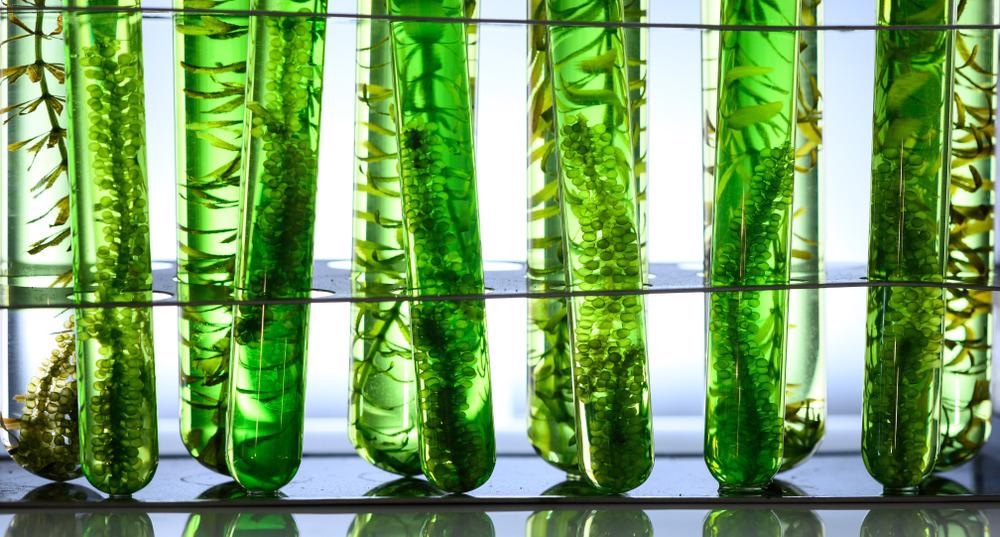
Image Credit: Chokniti Khongchum/Shutterstock.com
An innovative algae-based wastewater treatment technology developed by I-Phyc is making waves in the industry and has been shortlisted for Most Innovative New Technology of the Year at the Water & Wastewater Treatment Awards.
The technology is recognized for its forward-thinking use of algae’s natural ability to reduce the phosphorus and ammonia content of water to levels unachievable with conventional chemical methods without negative side effects. I-Phyc has also shown that the phosphorus and algae removed from the water can be reused.
I-Phyc’s innovation acts as a step towards its ambitious goal of cleaning up the world’s lakes and rivers using natural sources rather than chemicals, ensuring cleaner water supplies and a healthier environment. The sustainable water recycling technique established by I-Phyc will likely be important to obtaining several goals, such as helping companies reduce their carbon footprint and cut running costs, eliminating the unnecessary use of chemicals, and producing much-in-demand biomass resources. This helps to reduce the use of non-renewable energy sources. Here, we discuss the details of the new algae-based phosphorus removal technology and summarize its significance in terms of water treatment and beyond.
The Advantages of the I-Phyc’s Sustainable Water Recycling System
I-Phyc is a green solutions company that is motivated to establish a method of sustainable water recycling that protects our natural environment, eliminates the use of harsh chemicals, protects human health, captures carbon dioxide, and reduces our carbon footprint.
The new technology put forward by I-Phyc offers two key advantages. First, it removes contaminants from water, such as phosphorus and ammonia, without using chemicals. Second, it captures carbon dioxide and produces sustainable products from wastewater. The innovative process cleans up water supplies while simultaneously producing valuable products in a future-proof system.
Why Remove Contaminants from Water?
Excess levels of phosphates in the water supply can lead to eutrophication, a form of water pollution where a water source is progressively enriched with minerals. While phosphorus is a key nutrient to supporting plant and animal life, too much is detrimental. Eutrophication leads to hypoxia, where the oxygen becomes depleted from the aquatic environment. This can be fatal to fish, especially those requiring relatively high levels of dissolved oxygen.
Similarly, high levels of ammonia can have fatal results for aquatic life. While ammonia is not toxic to humans, it is toxic to fish and other animals that live in water. Unlike phosphorus, which has an indirect detrimental impact on aquatic life, ammonia is directly toxic to aquatic ecosystems. When present in high levels in a water system, organisms find it hard to excrete ammonia, leading to internal build-ups of the toxin which eventually leads to death.
Therefore, it is vital to establish a safe and effective method of removing contaminants from water to ensure the health of aquatic environments.
How the Algae-Based Wastewater Treatment Technology Works
Algae are photosynthetic, enabling them to convert sunlight into energy and take up carbon dioxide to produce more complex matter that it uses to grow and reproduce. This natural function of algae makes them important for a wide range of ecosystems, for example, they are vital to supporting the growth of coral reefs and regulating atmospheric carbon dioxide levels.
CEO of I-Phyc, Russell Bright, explains that the idea for I-Phyc’s algae-based phosphorus removal technology was born out of observing the natural behavior of algae in phosphorus-rich water. Scientists know that high levels of phosphorus in wastewater lead to algal blooms since algae feed on phosphorus. This natural affinity for algae to clean up aquatic phosphorus content led the team at I-Phyc to develop its Bio-P removal technology, which leverages the natural process of phosphorus-feeding algae. Importantly, the process is 100% sustainable and better than current methods that rely on harmful chemicals.
An additional benefit of the algae-based wastewater treatment technology established by I-Phyc is the potential to use the biomass produced by commercially growing the algae for a wide range of purposes. Industries that require specialist lubricants and those that require sustainable fertilizer are those that stand to benefit from the mass production of biomass from I-Phyc’s wastewater treatment technology.
Future Outlook of Algae-Based Wastewater Treatment Technology
Bright, I-Phyc’s CEO, is hopeful that the algae-based wastewater treatment technology will see rapid and widespread adoption in water treatment plants. He believes that the technology is positioned to have a significant positive impact on the water industry, as well as to provide an effective and future-proof method of protecting aquatic ecosystems.
References and Further Reading
Algae-based phosphorus removal technology for wastewater makes innovation shortlist. Envirotec. Available at: https://envirotecmagazine.com/2021/03/30/algae-based-phosphorus-removal-technology-for-wastewater-makes-innovation-shortlist/
Aquatic Life Criteria - Ammonia. EPA. Available at: https://www.epa.gov/wqc/aquatic-life-criteria-ammonia
The Potential of Algae. I-Phyc. Available at: https://i-phyc.com/about-algae/
Who are I-Phyc? I-Phyc. Available at: https://i-phyc.com
Why monitor phosphate levels in water? EMS. Available at: https://www.em-solutions.co.uk/insights/why-monitor-phosphate-levels-in-water/
Disclaimer: The views expressed here are those of the author expressed in their private capacity and do not necessarily represent the views of AZoM.com Limited T/A AZoNetwork the owner and operator of this website. This disclaimer forms part of the Terms and conditions of use of this website.